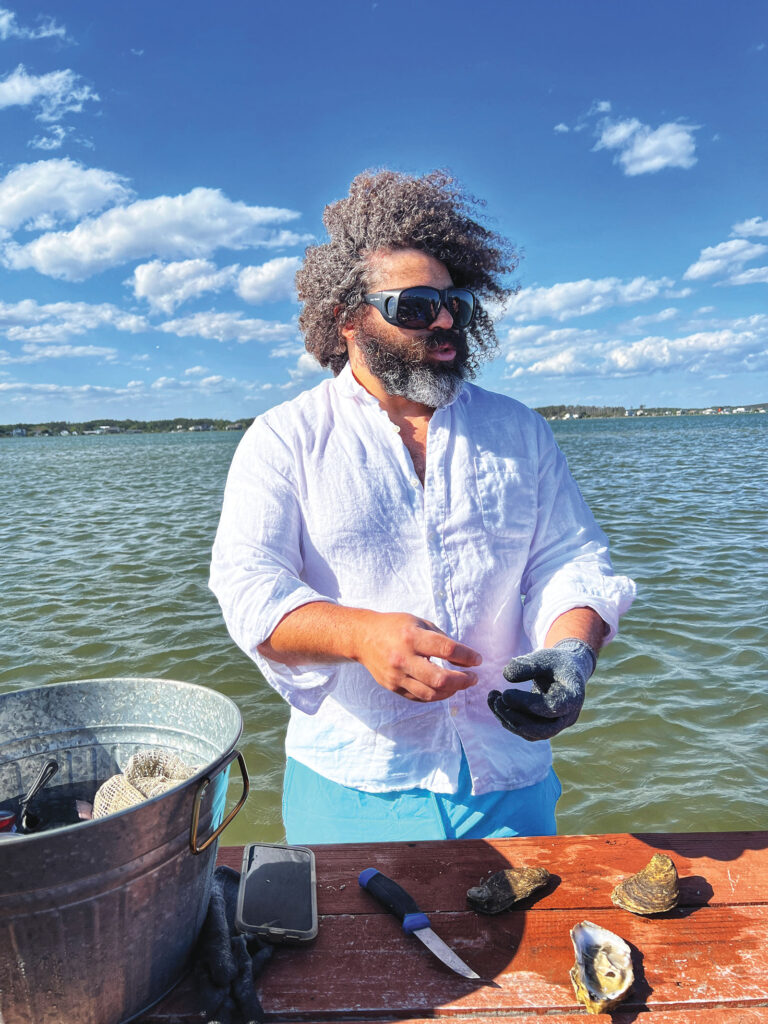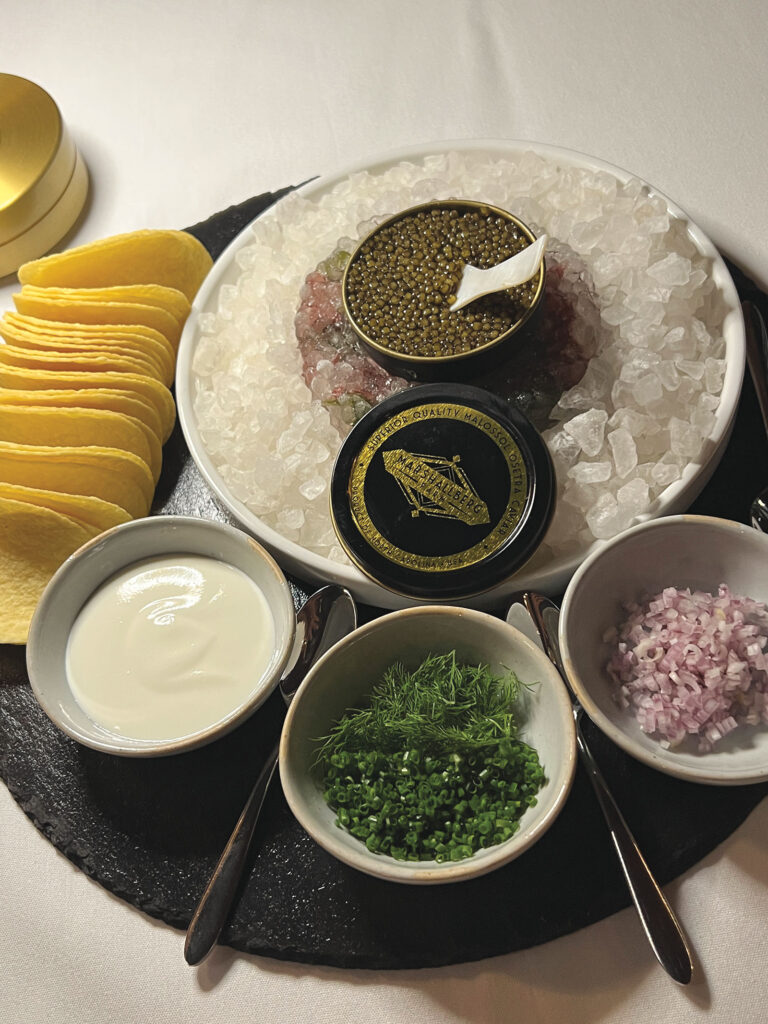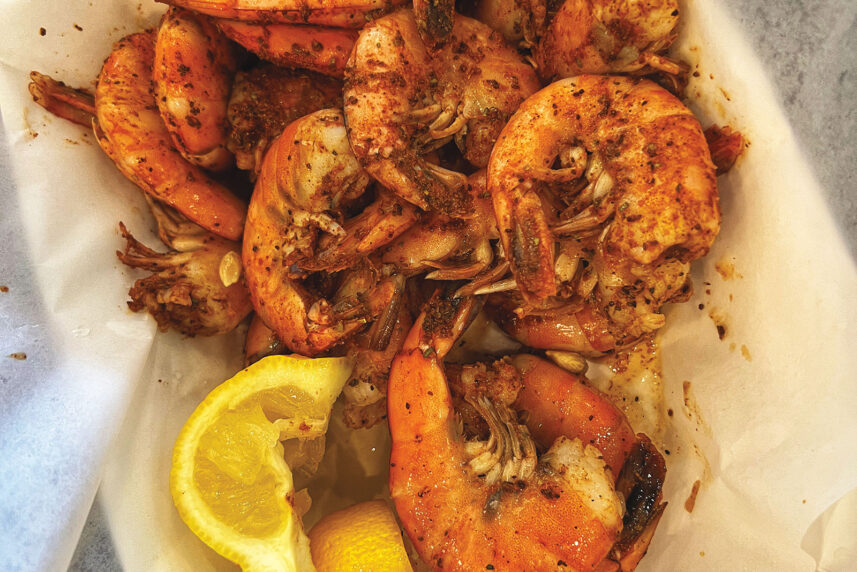Article:
DOCK TO DISH
STORY AND PHOTOS BY MELISSA WISTEHUFF
North Carolina’s rich history of agriculture harvests more than just vegetables and tobacco. From the mountains to the Piedmont—and up and down the coast—aquaculture is forging its way to the top of the Tar Heel State’s list of best industry contenders.
Aquaculture—the process of growing and farming fish and aquatic plants—creates sustainable seafood in fresh or salt water, both in indoor and outdoor settings. North Carolina’s plentiful natural water resources make it possible for the aquatic farming industry to boom across the state.
Our main source of sustainable seafood farming comes from trout in the west, catfish in the central regions and oysters along the coast. According to North Carolina State University’s NC State Extension, which has an aquaculture division, the flourishing industry produced $56.5 billion in state revenue during 2019. With numbers like that, North Carolina is considered a big fish in the sustainable farming industry.
We visited two Crystal Coast aquaculture farms to see firsthand how it all works. Hint: It was shuck-ingly interesting!
OYSTERS CAROLINA
While oysters were once plentiful along the North Carolina coast, overharvesting them became problematic due to unsustainable practices that depleted oyster beds. Until the 1880s, small oyster gardens were manned by local fishermen.
By the end of the decade oysters were being harvested at an unprecedented rate, as large out-of-state dredgers sailed along our coastline, kicking off the “Oyster War” between North Carolina and Maryland. Today, local oyster farmers report that numbers have still not returned to what they were at the peak of the late 19th century—but with an uptick of interest in sustainable farming, they hope this will soon change.
Enter Oysters Carolina. Durham native Ryan Bethea heard the ocean calling in 2011. Bethea says he was immediately drawn to the world of oyster farming when he read a story in a local magazine about how the North Carolina coast is prime real estate for oysters, yet we have so few oyster farmers. “I love my home state, and I’ve always loved the water. Plus, oysters are delicious!” says the Oysters Carolina founder and owner. “I combined all three and dove right into the oyster world, learning as much as I could.”
Keeping oysters alive can be tricky, since factors such as weather and natural disasters fall outside of Bethea’s control—not to mention the intricate scientific details that affect the life and viability of an oyster. “Oysters are part of a delicate ecosystem,” he says. “They’re a keystone species, meaning that if they weren’t here, everything around it—the seagrass, the other sea life—would all be affected,” he explains.
Bethea leases water off the coast of Harkers Island, which is considered one of the saltiest waterways in the country. The salinity of the water there creates a naturally saltier oyster. Bethea takes pride in ensuring that all his oysters are harvested and delivered within 24 hours. “There is a big difference in the taste of an oyster that is fresh, versus one that has been out of the water for several days,” he says.
Try out Bethea’s “fresh is best” theory yourself! All oysters served at Herons in Cary are delivered within 24 hours from Oysters Carolina. Learn more at oysterscarolina.com.

MARSHALLBERG FARM
According to a February 2020 report from Business Insider, China supplies one-third of the world’s caviar. Since Chinese caviar farms are significantly less regulated than U.S. caviar farms, much of this imported seafood is created in conditions lacking environmental, chemical and hormonal regulations. Marshallberg Farm set out to change this by sustainably producing Osetra caviar in indoor facilities located in the western town of Lenoir, and just outside of Harkers Island in Marshallberg.
Marshallberg Farm is the only farm in the country that utilizes the state-of-the-art recirculating aquaculture system (RAS) technology. Ranked a “Best Choice” for sustainability by the Monterey Bay Aquarium Seafood Watch, RAS works much like that of an aquarium and is the newest way to raise fish without negatively impacting the environment. “Our mission is to support sustainable aquaculture in America,” says owner Lianne Won-Reburn.
To produce caviar, Marshallberg Farm must raise Osetra, a critically endangered Russian sturgeon found in the Caspian Sea. By using RAS, Marshallberg Farm can recycle more than 95% of its water, as well as responsibly dispose of waste, instead of releasing it into the environment.
“By using a recirculating system, we are not at the mercy of outside pollutants and maintain full control of our water quality,” Won-Reburn says. “This system is more like a water treatment plant than a fish farm. We filter about 1 million gallons a day, giving us the highest filtration possible for our fish.”
In addition to serving as the primary source of caviar, sustainable aquaculture of sturgeon is considered the most important component of wild sturgeon conservation. Marshallberg Farm “walks the walk” by supporting other organizations committed to sustainable aquaculture. North Carolina State University’s Marine Aquaculture Research Center, for example, was founded in 2009 in part from a generous Marshallberg Farm donation.
Learn more about Marshallberg Farm and where to buy its caviar and other products at marshallbergfarm.com.

MEL’S MEALS
Midtown’s Social Media Manager Melissa Wistehuff spent a week being wined and dined along the Crystal Coast. Here are her top picks for eateries to check out the next time your family visits the region.
BREAKFAST
• The Village Market, Emerald Isle
Try: Country-style ham, egg and cheese on a croissant.
Do: Shop for local artisan crafts while waiting for your food.
• The Banks Grill, Morehead City
Try: Biscuit and gravy.
Do: Share a “soon-to-be-famous” jumbo cinnamon roll.
LUNCH
Black Sheep, Beaufort
Try: Any of the brick oven pizzas.
Do: Catch the nearby Island Express Ferry from Beaufort to Shackleford Banks.
Surf’s Up Grill & Bar, Emerald Isle
Try: Cocktails—both shrimp and on the rocks.
Do: Walk out on the neighboring Bogue Inlet Pier.
DINNER
Moonrakers, Beaufort
moonrakersbeaufort.com
Try: Baked shrimp with a cup of clam chowder.
Do: Sit on the rooftop and take in the view of Carrot Island.
Prime Bistro, Morehead City
eatprimebistro.com
Try: The seafood tower.
Do: Leave the kids with a sitter and make this a date night.



